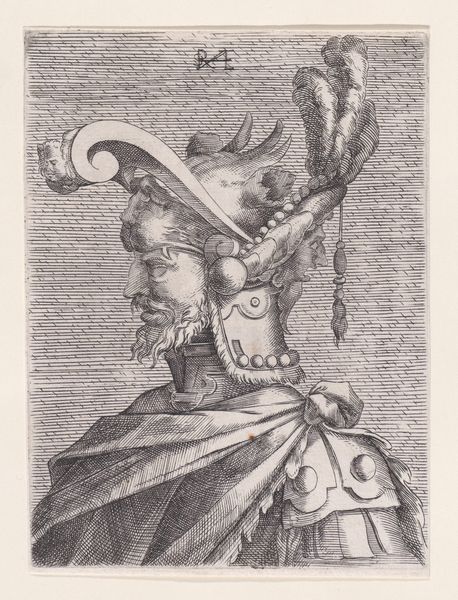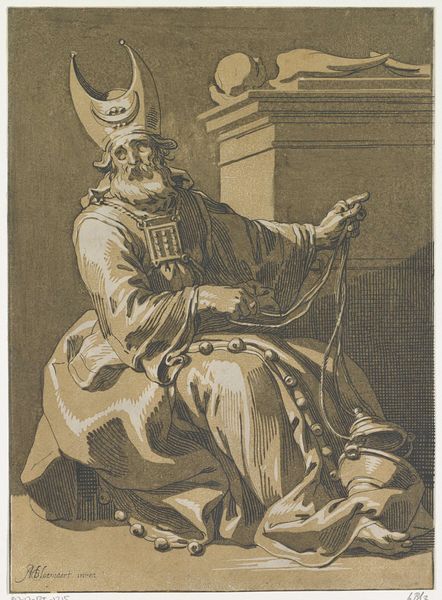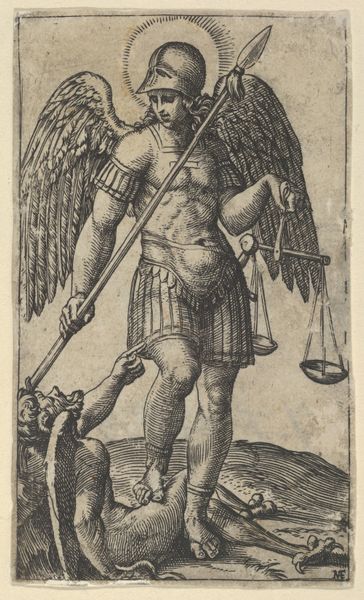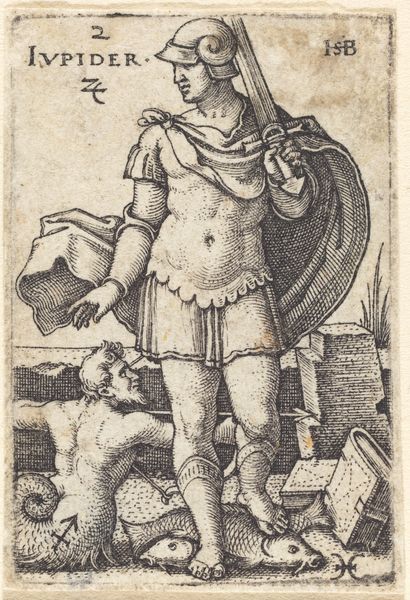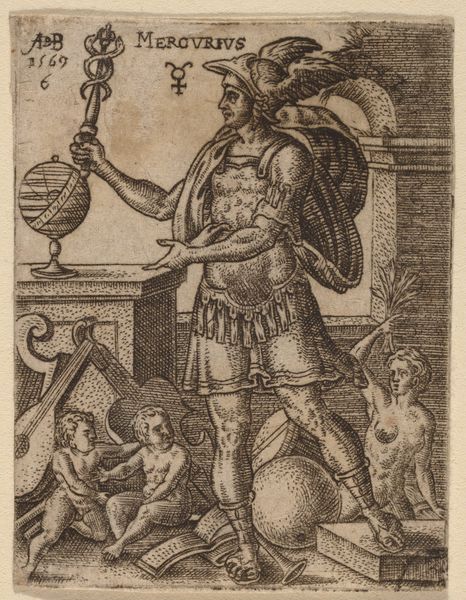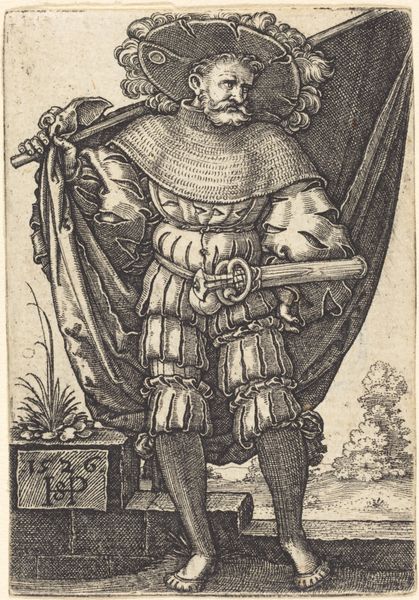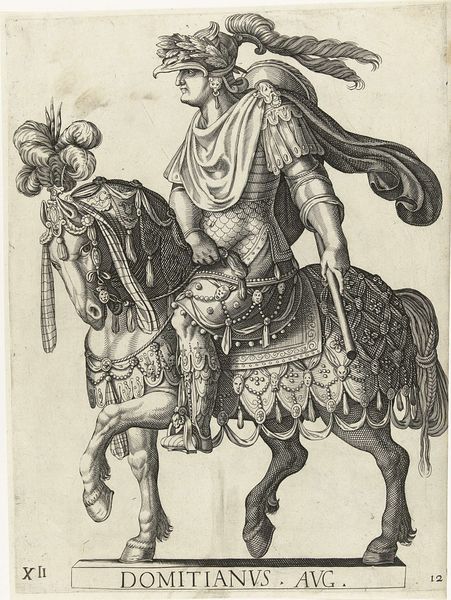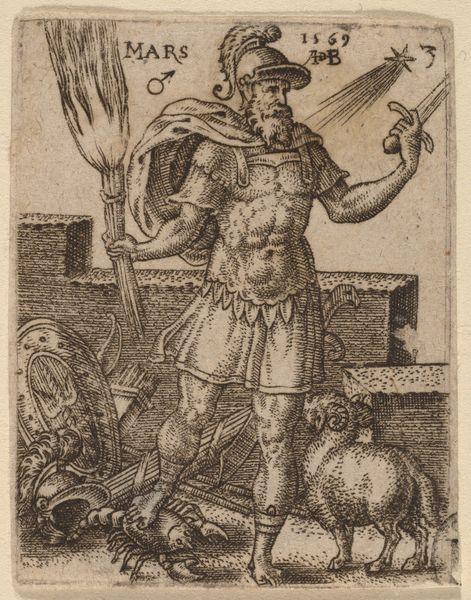
Charles V (Karl V), Emperor, from Herberstains Rerum Moscoviticarum Commentarii 1546
0:00
0:00
drawing, print, engraving
#
portrait
#
drawing
# print
#
figuration
#
history-painting
#
armor
#
engraving
Dimensions: Sheet: 7 5/16 × 4 7/8 in. (18.6 × 12.4 cm)
Copyright: Public Domain
Curator: Wow, that's a stern figure. He seems…imprisoned, almost, by his own regalia. Editor: Indeed! What we're looking at here is "Charles V (Karl V), Emperor," an engraving made in 1546 by Augustin Hirschvogel, now residing at the Metropolitan Museum. It accompanied Herberstains Rerum Moscoviticarum Commentarii. A powerful image indeed. Curator: Right! Notice how every piece of his armor and adornment seems to weigh him down, especially those peculiar ribbons at his knees. This image seems preoccupied with not only displaying power but also the burden of maintaining it. Armor is a potent symbol—protection, aggression, status—but here, it seems isolating. Editor: I'm struck by the detail Hirschvogel crammed in! The fur draped over his shoulder looks heavy, the helmet looks tortuous. This image definitely seems to revel in the finery, power, and also cost, you know? Curator: And it's not just armor. Consider the scepter. A symbol of authority, yes, but the way he clutches it almost suggests he needs its support as much as wielding it. His throne is a very decorated block, not inviting at all! These historical objects create, perpetuate and reinforce a ruler's legitimacy and position. Editor: Almost aggressively decorated! Those sharp geometric patterns just underline the overall austerity. Is that meant to be a coat of arms on the front there, nearly blank? Maybe to reinforce, even playfully, the Emperor's personal impact? Curator: That's very possible. Remember this image appeared alongside texts describing Muscovy! Visual language needed to impress an audience while creating a visual reference point. Think how powerful repeated visual cues could be. The Habsburg jaw, their emblems...It reinforced the very idea of dynastic power! Editor: Yes, visual memory, historical presence all intertwined! Overall the portrait evokes that idea for sure. The engraving style too: that meticulous attention to line and detail makes the artwork seem… both immediate and enduring, strangely. Thank you for your deep insights. Curator: My pleasure. The layers of symbolic intent here really echo across centuries.
Comments
No comments
Be the first to comment and join the conversation on the ultimate creative platform.



